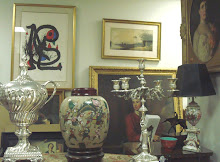 Musicians are inherently creative, and many engage in other forms of creation as a means of exercising these impulses. When they are not in the studio or on stage many musicians through out time have devoted themselves to writing poetry and prose and some have even turned to the visual arts to express their unique artistic voice. It often seems that artists aspire to be rock stars and rock stars aspire to be artists but only some of these musical geniuses have successfully bridged the gap between the two forms and have been successful in both arenas. Musicians such as Bob Dylan, Paul McCartney and Paul Simonon of the Clash have found a second front of fame through the visual arts, a stunning achievement and a tribute to their talent.
Musicians are inherently creative, and many engage in other forms of creation as a means of exercising these impulses. When they are not in the studio or on stage many musicians through out time have devoted themselves to writing poetry and prose and some have even turned to the visual arts to express their unique artistic voice. It often seems that artists aspire to be rock stars and rock stars aspire to be artists but only some of these musical geniuses have successfully bridged the gap between the two forms and have been successful in both arenas. Musicians such as Bob Dylan, Paul McCartney and Paul Simonon of the Clash have found a second front of fame through the visual arts, a stunning achievement and a tribute to their talent. These multi-talented artists are not confined to the boundaries of rock and roll as is proven by the exciting career of Roger Chaput. Born in 1909, Chaput and his parents moved to Paris while he was young and the budding musician soon came to identify the city as his own. Learning the guitar as a child, Chaput eventually found his calling playing the jazz and swing music of the day. His most successful venture into the Parisian music scene came when he joined Django Reinhardt, Reinhardt’s brother and even a jazz violinist to form the Quintette du Hot Club de France. This group, active in the 1930’s, was inspired by American jazz and swing music but borrowed heavily from the gypsy guitar roots of Reinhardt’s childhood. Playing rhythm guitar for Reinhardt for nearly a decade, Chaput eventually shifted gears towards the visual arts, creating caricatures and eventually moving on to oil paints. Capturing still lives, portraits and landscape pieces, the artist funneled his vibrant artistic bravado into his unique and raw paintings.
These multi-talented artists are not confined to the boundaries of rock and roll as is proven by the exciting career of Roger Chaput. Born in 1909, Chaput and his parents moved to Paris while he was young and the budding musician soon came to identify the city as his own. Learning the guitar as a child, Chaput eventually found his calling playing the jazz and swing music of the day. His most successful venture into the Parisian music scene came when he joined Django Reinhardt, Reinhardt’s brother and even a jazz violinist to form the Quintette du Hot Club de France. This group, active in the 1930’s, was inspired by American jazz and swing music but borrowed heavily from the gypsy guitar roots of Reinhardt’s childhood. Playing rhythm guitar for Reinhardt for nearly a decade, Chaput eventually shifted gears towards the visual arts, creating caricatures and eventually moving on to oil paints. Capturing still lives, portraits and landscape pieces, the artist funneled his vibrant artistic bravado into his unique and raw paintings.
The piece that MIR has in its collection shows off many of the key characteristics of Chaput’s work. Painted in a naive and two-dimensional style, the painting of a lace maker is nonetheless infused with a deep sense of energy. Derived from the almost uncontrollable tone of red that fills the background, the energy seems to be everywhere but on the face of the subject. Oblivious to the enlivened atmosphere the worker plugs away at her chore, her thoughts lost even to herself. Much of Chaput’s portraiture features profile views of subjects that seem almost overwhelmed by their backdrop, perhaps his way of expressing an atmospheric rhythm he discovered in interwar Paris.
MIR Appraisal Services, Inc. is different from other fine art appraisers because of the time and effort they devote to researching the hidden stories behind our clients’ artwork. With a large staff of researchers devoted to supporting MIR’s appraisal efforts the company puts a premium on unearthing the hidden stories behind works of art and educating their clients. This dedication is the icing on the cake of a solid service that aims to give clients appraisals tailored to their needs and pointing them in the right direction should they wish to sell their piece of art. We encourage you to call and make an appointment to visit our office on Michigan Avenue and talk to our experienced staff.
Written and Researched by Justin Bergquist
MIR Appraisal Services, Inc.
Principal Appraiser and Director: Farhad Radfar, ISA, AM
307 N. Michigan Avenue, Suite 308
Chicago, IL 60601
(312) 814-8510
Works Cited:
James, Donald. “Reinhardt, Django,” in Jazz.com.
Images:
http://www.djangostation.com/IMG/jpg/024-SteI_phane-Graeuro_haput_-1936.jpg
http://www009.upp.so-net.ne.jp/JAZZ-78rpm/masa153.JPG
http://www.chicagoartappraisers.com/invchaput1.html





























